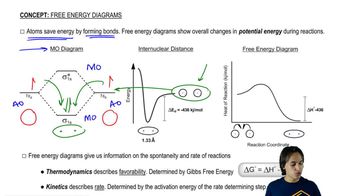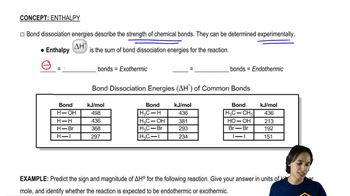The bond angles in a regular polygon with n sides are equal to 180° - 360°/n
a. What are the bond angles in a regular octagon?
b. What are the bond angles in a regular nonagon?
 Verified step by step guidance
Verified step by step guidance Verified video answer for a similar problem:
Verified video answer for a similar problem:



 6:07m
6:07mMaster Introduction to free energy diagrams. with a bite sized video explanation from Johnny
Start learning